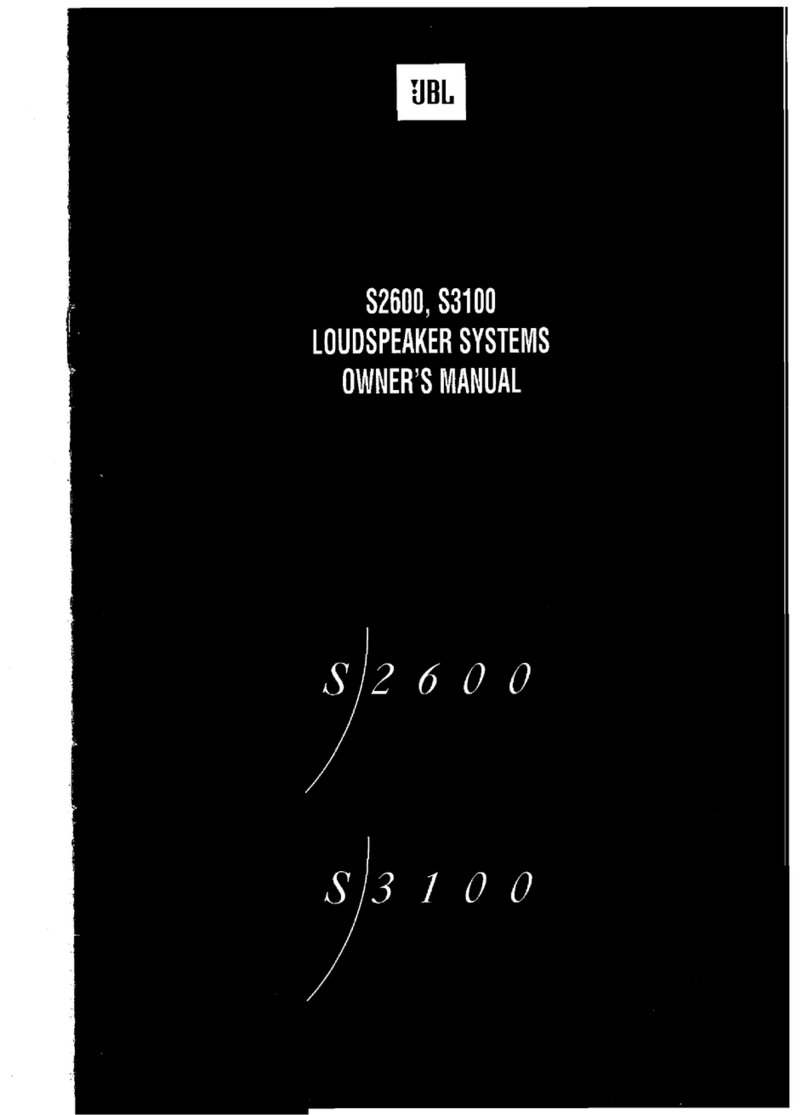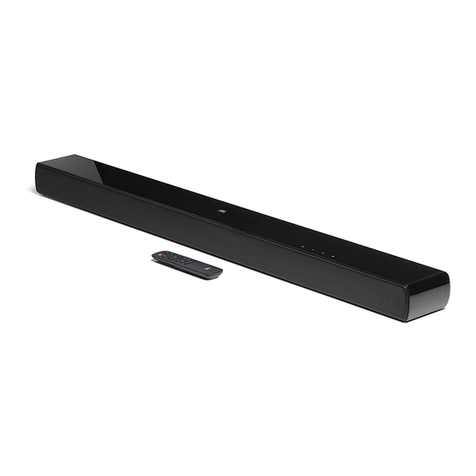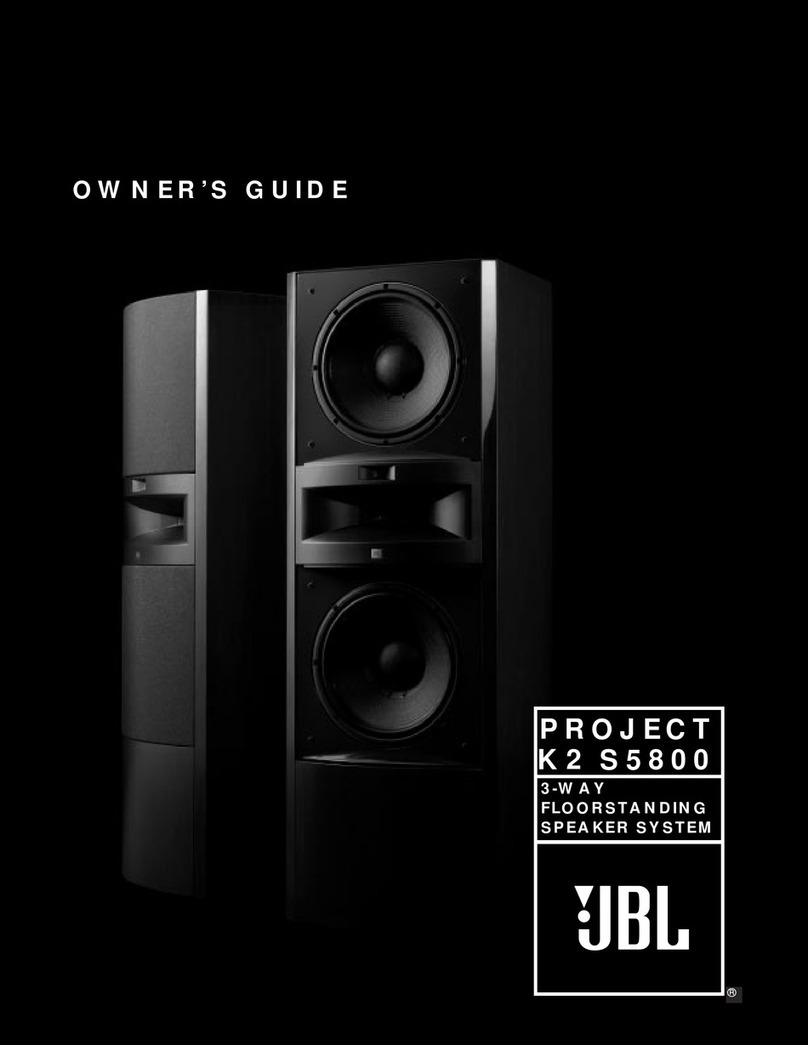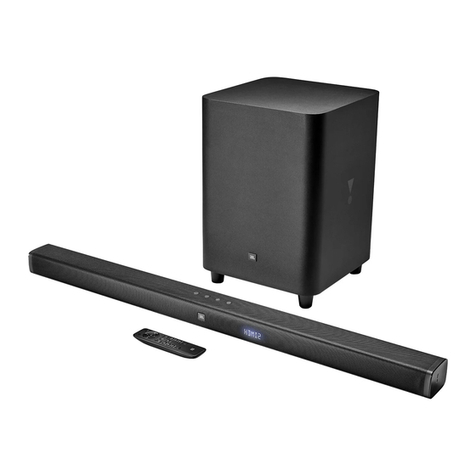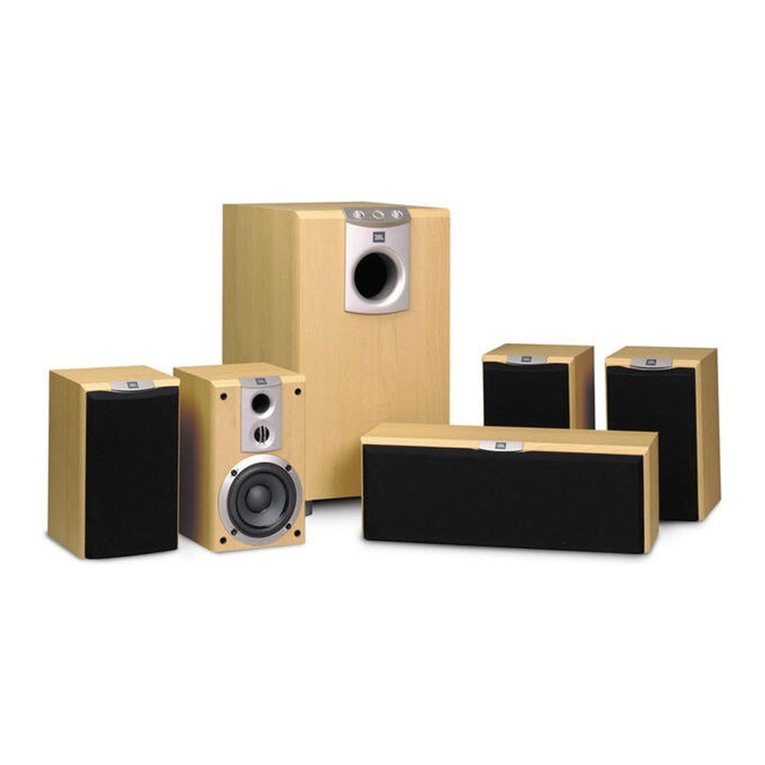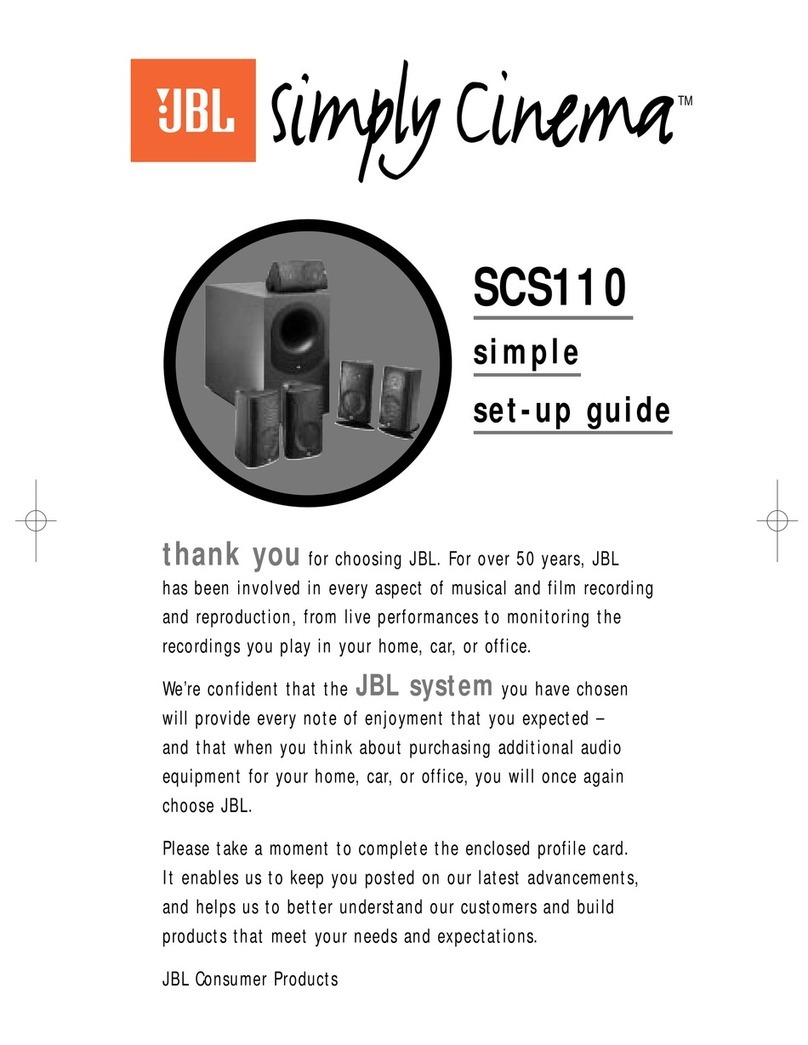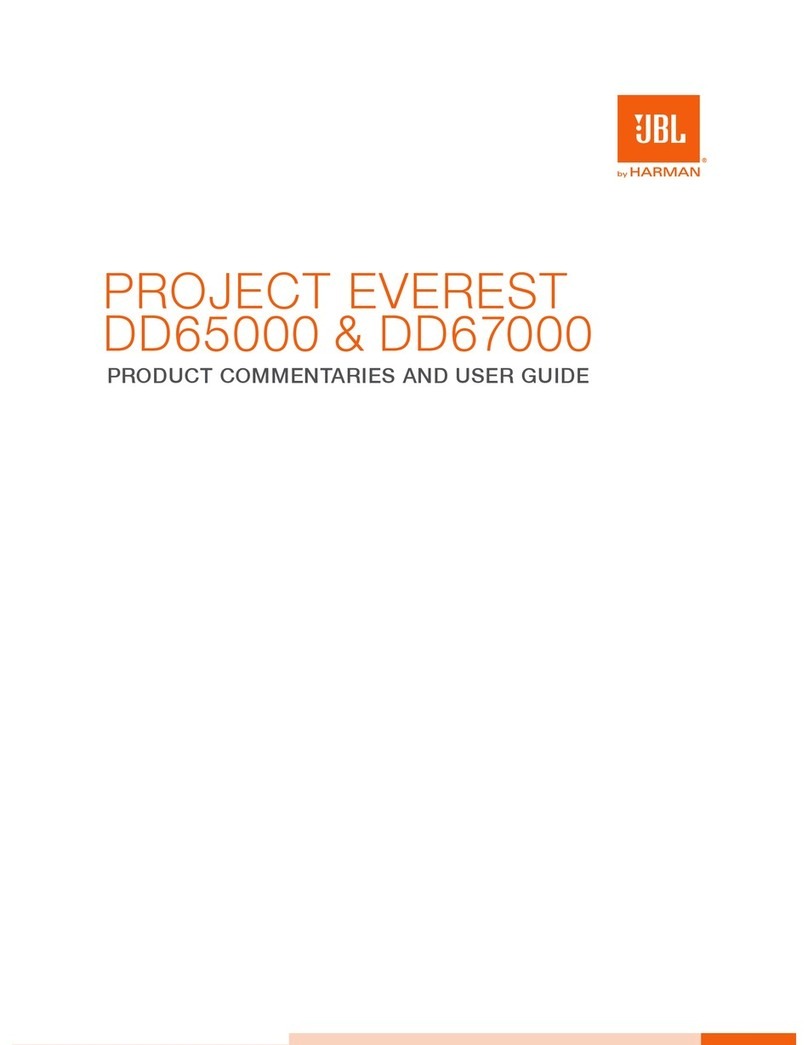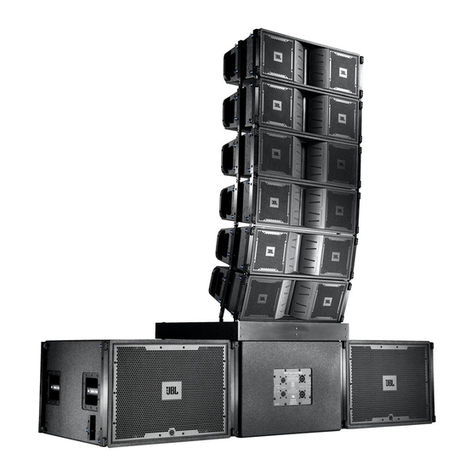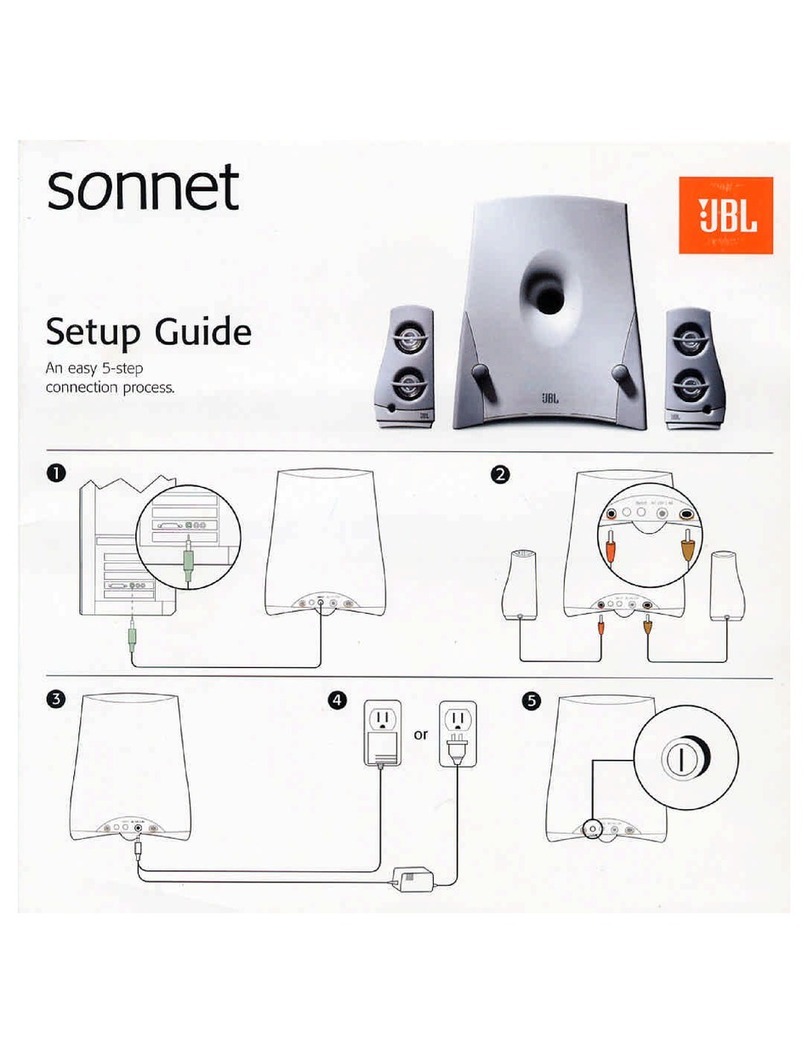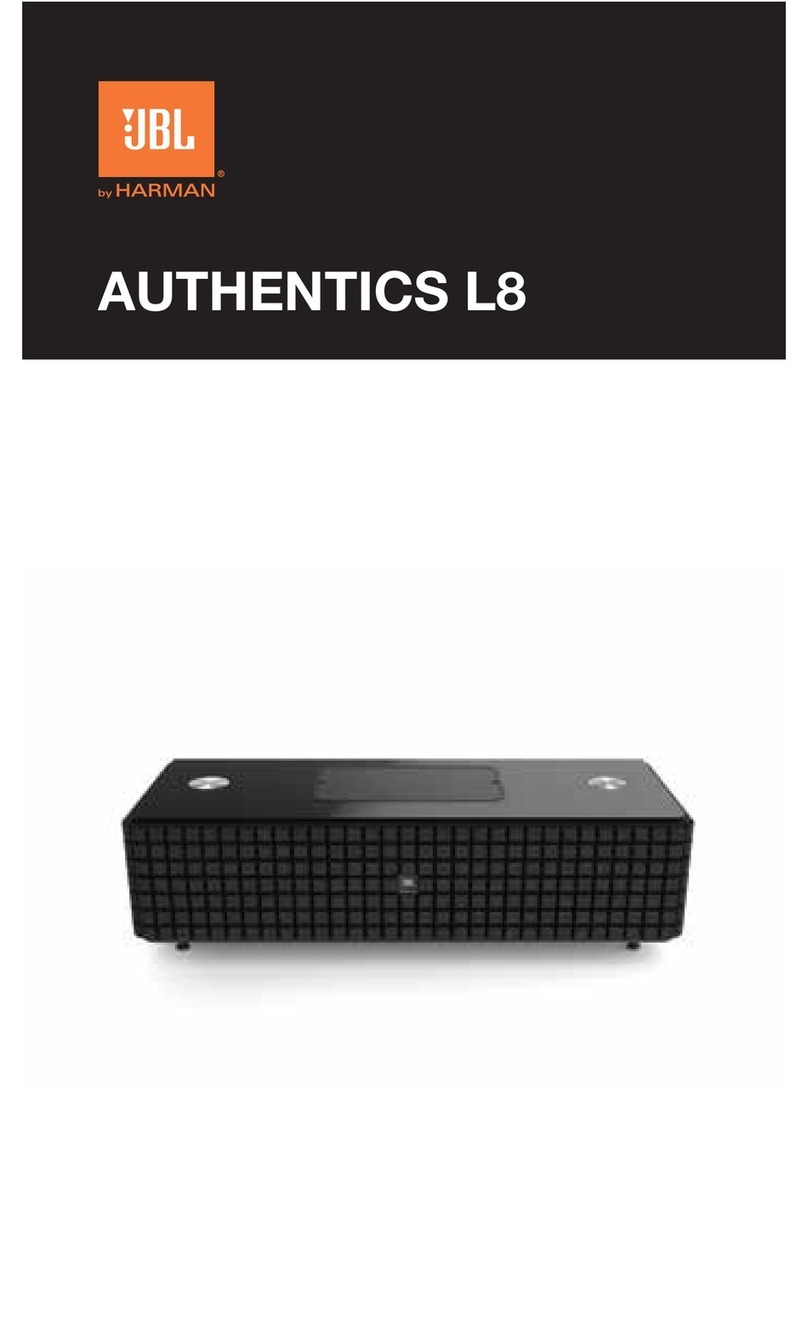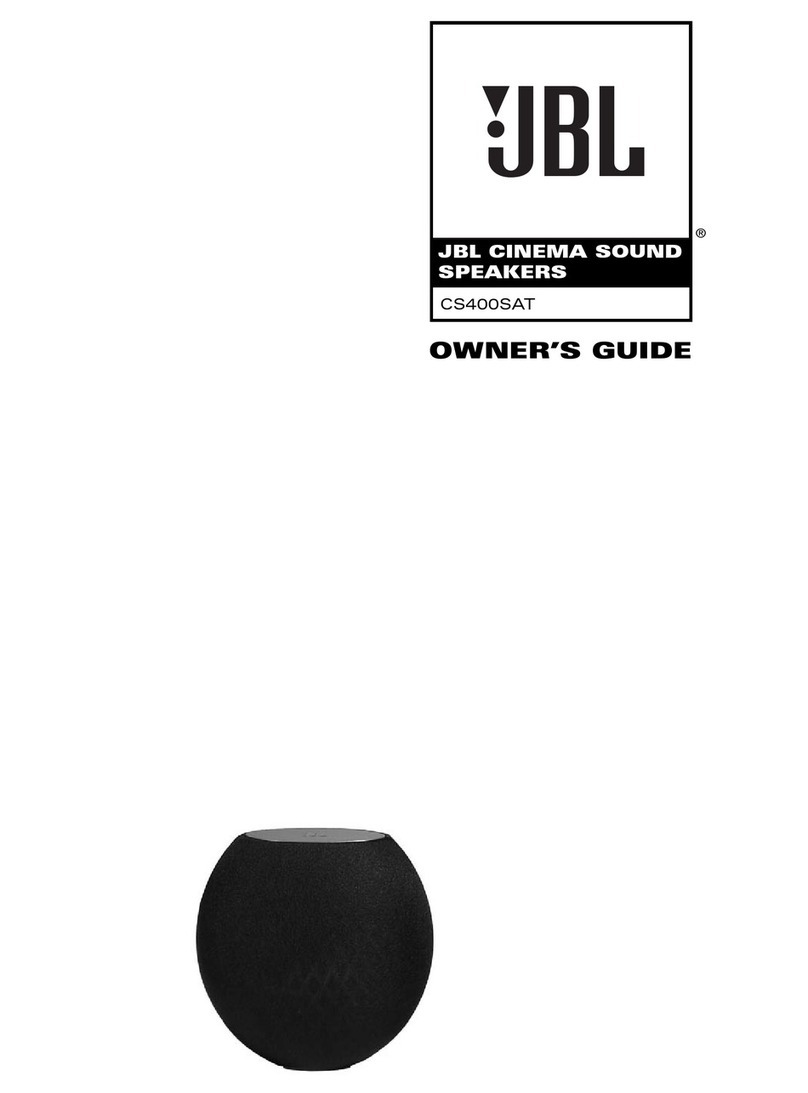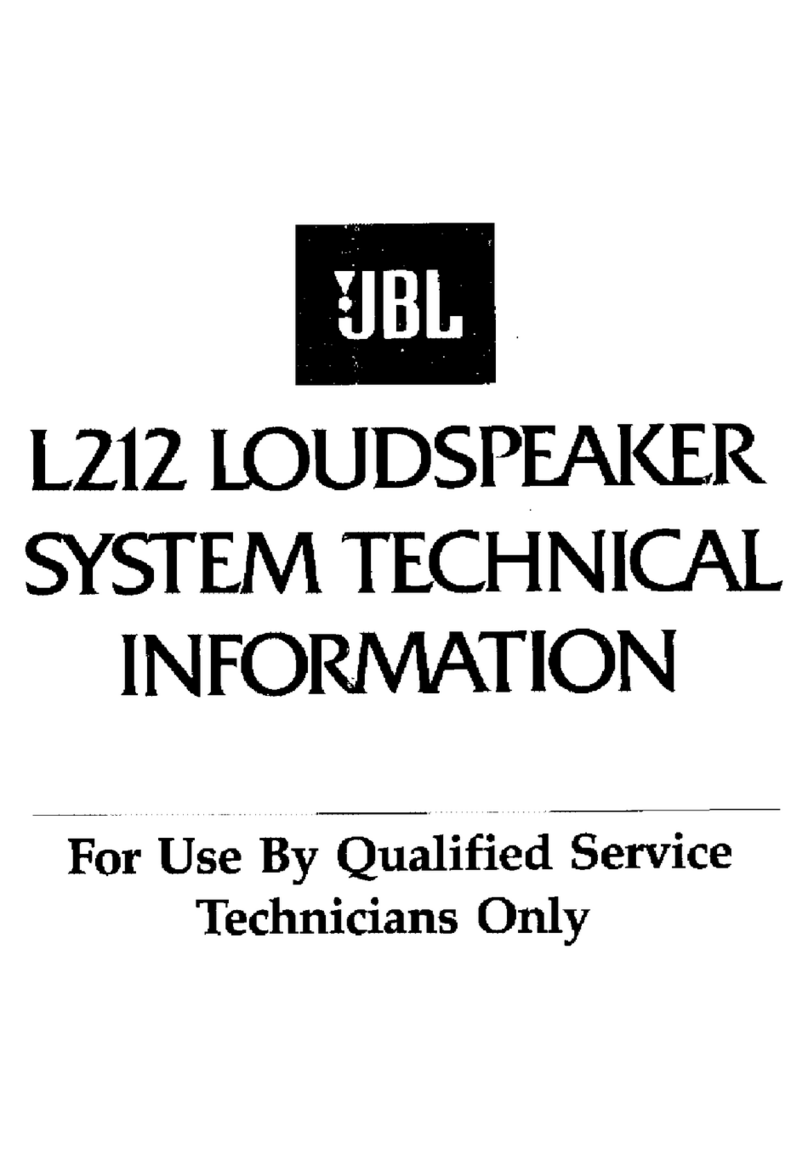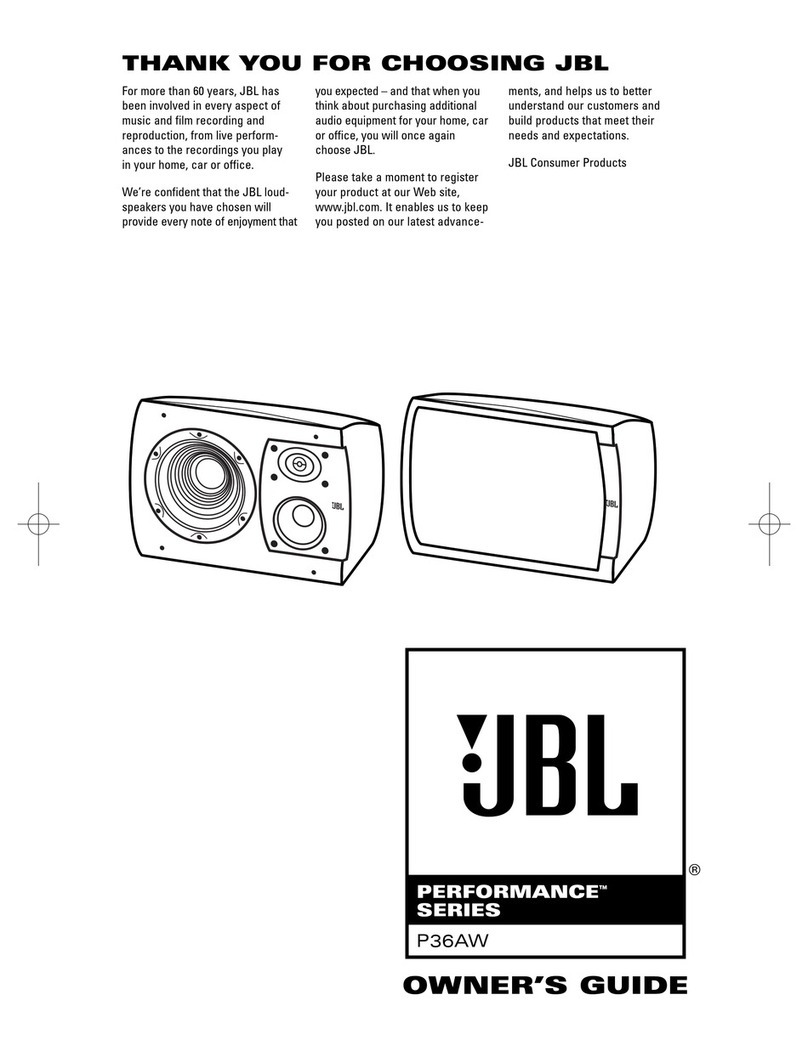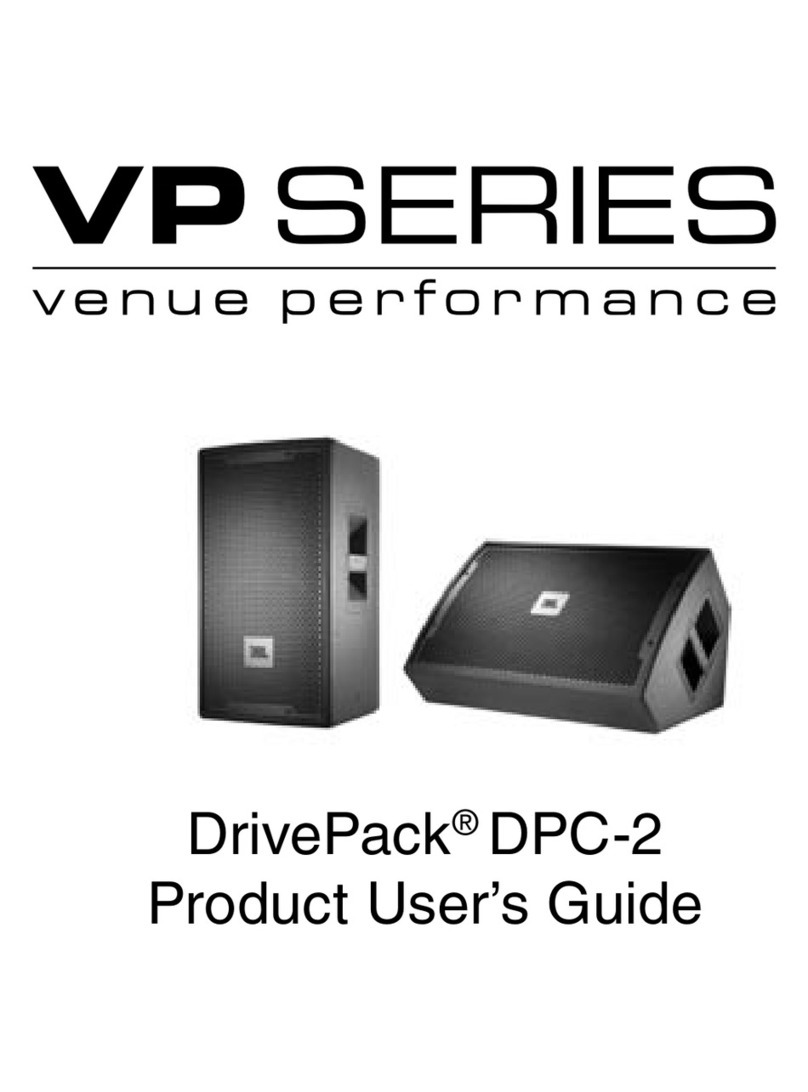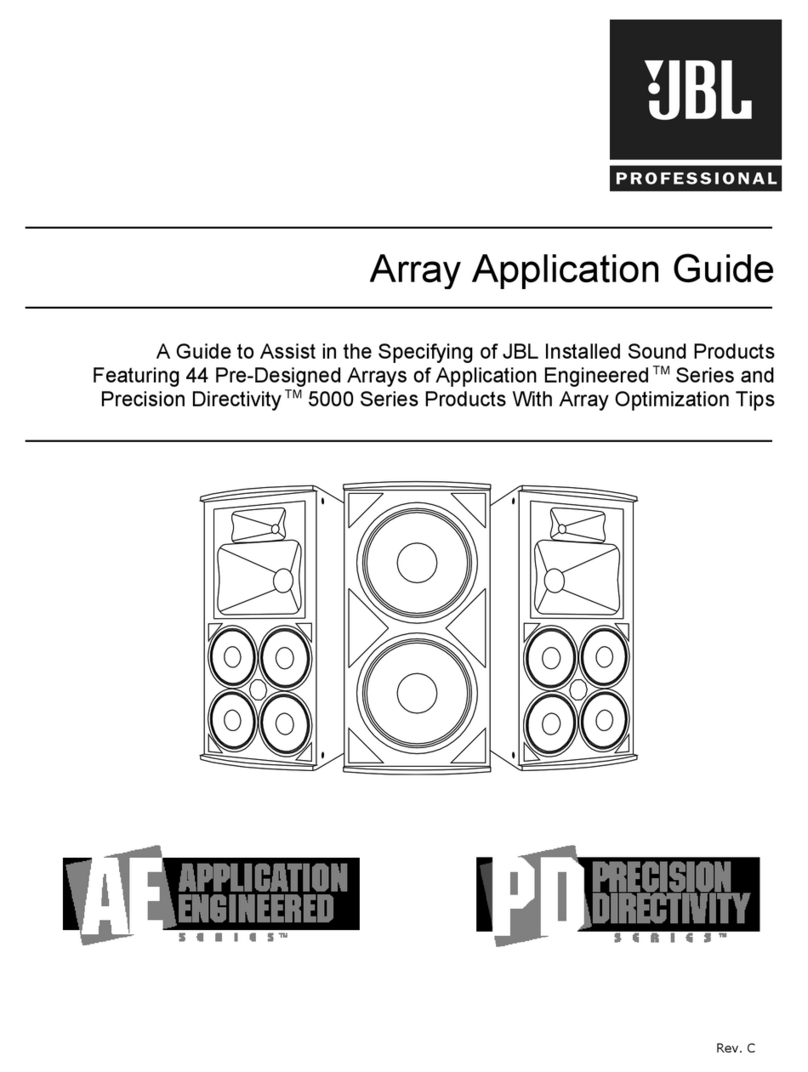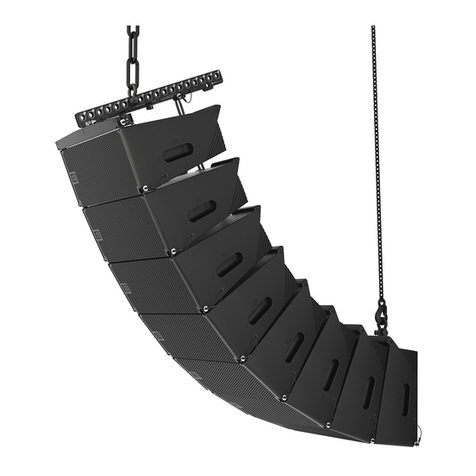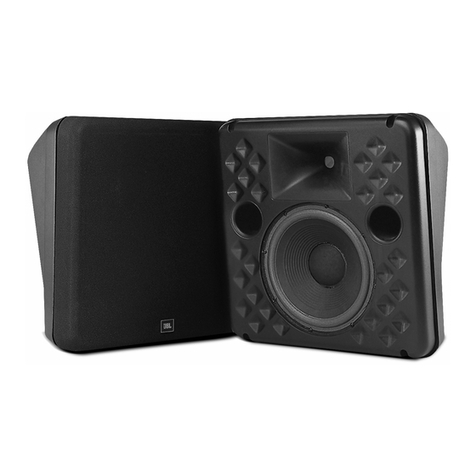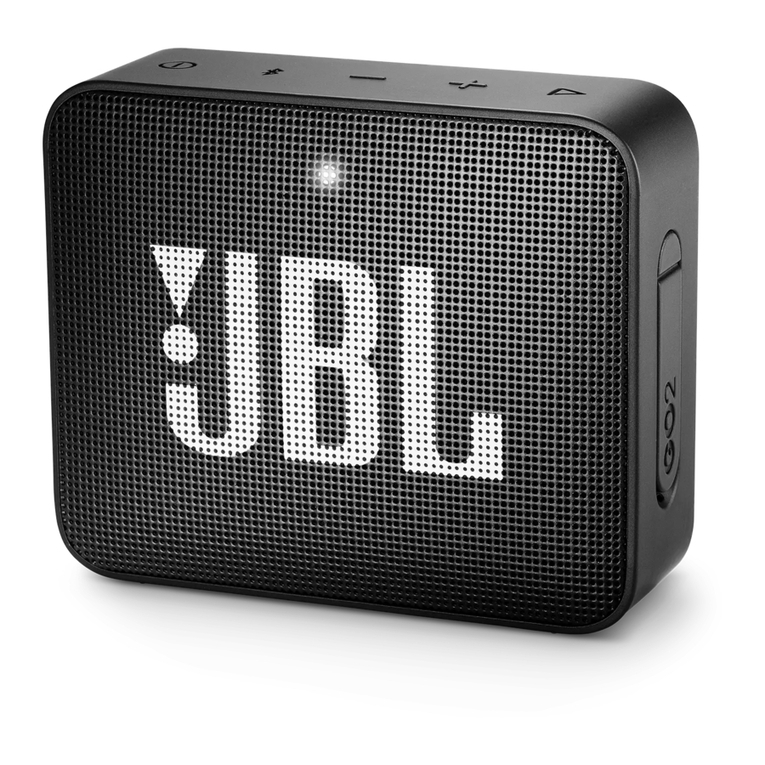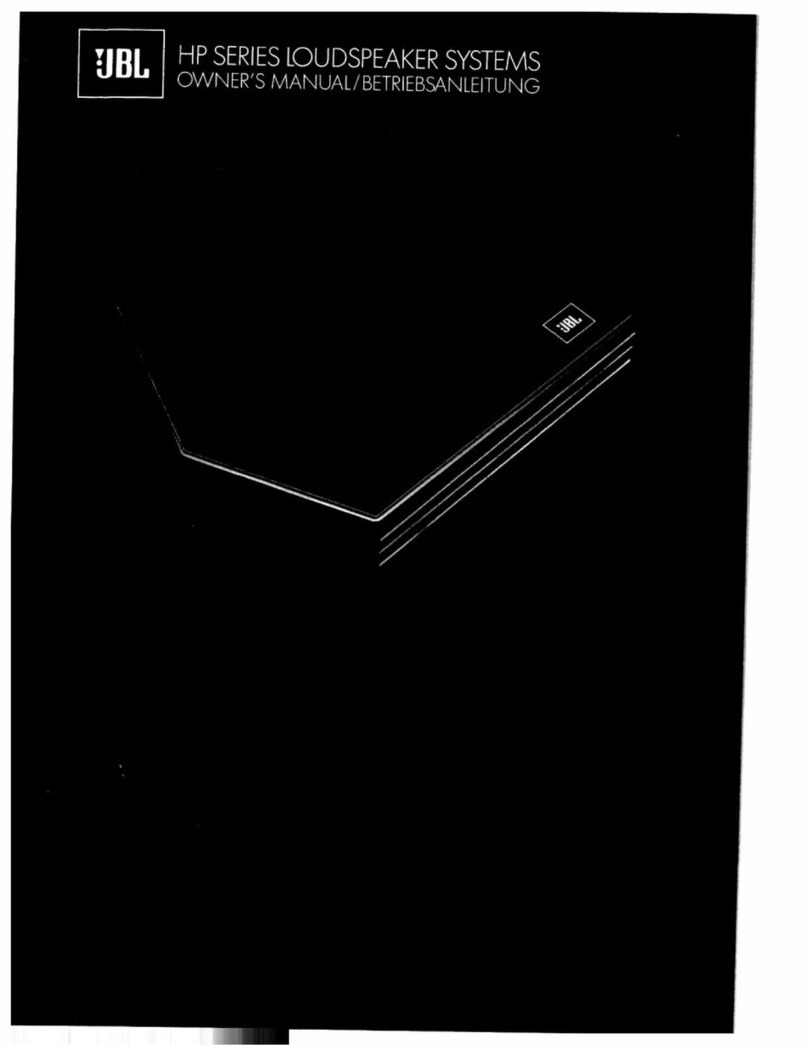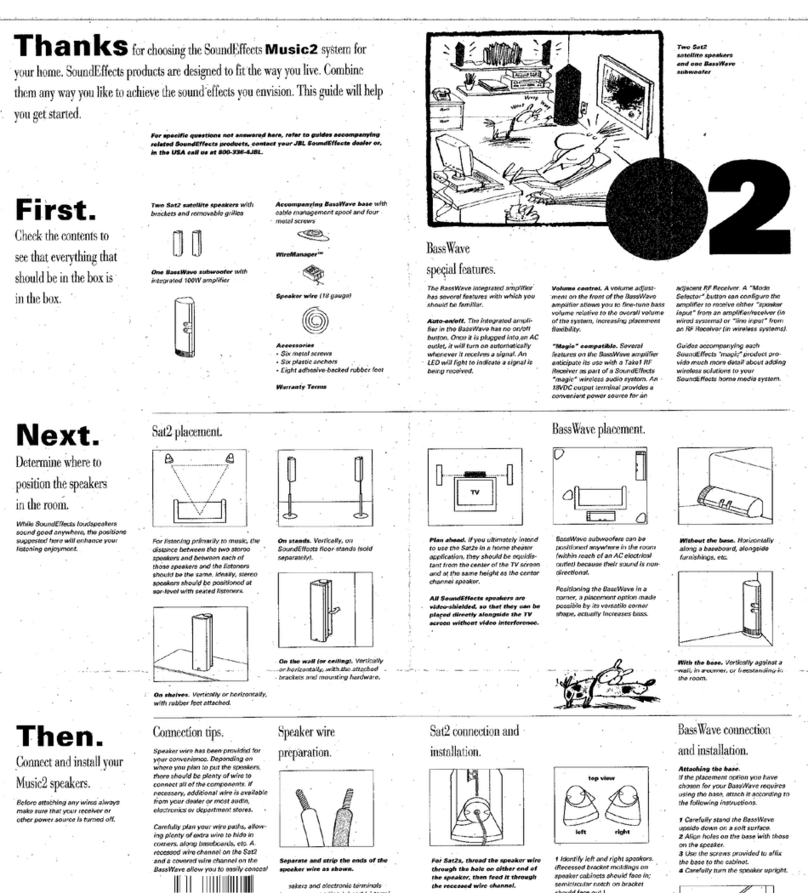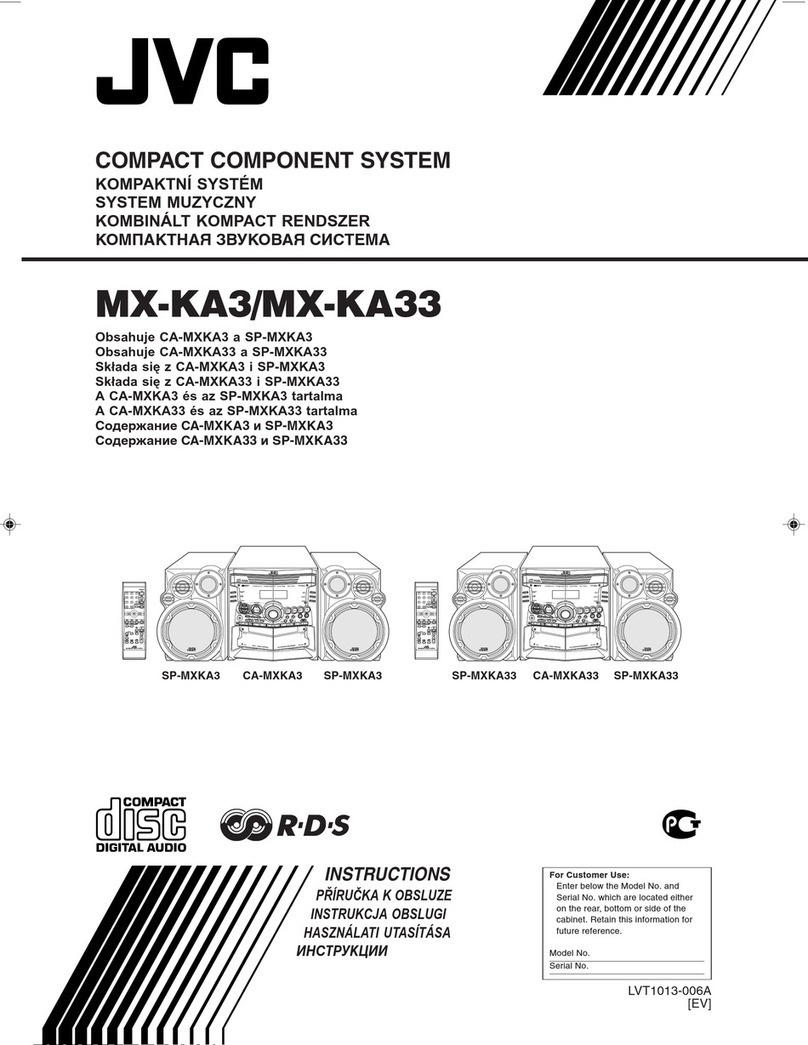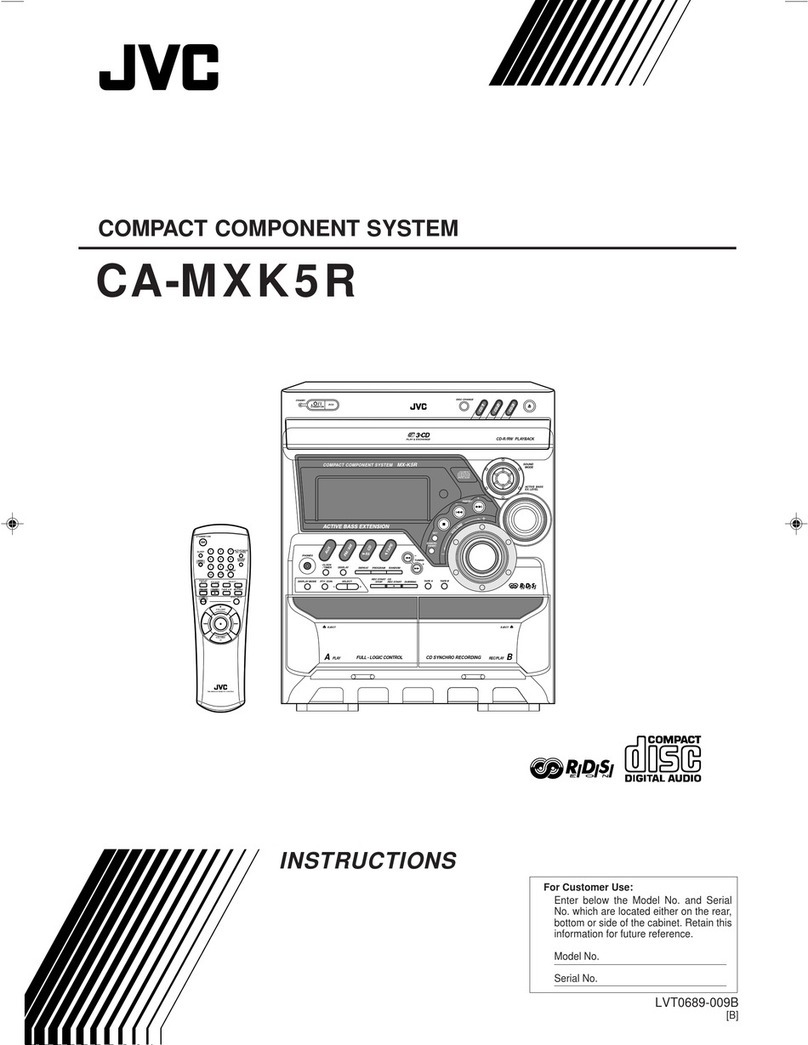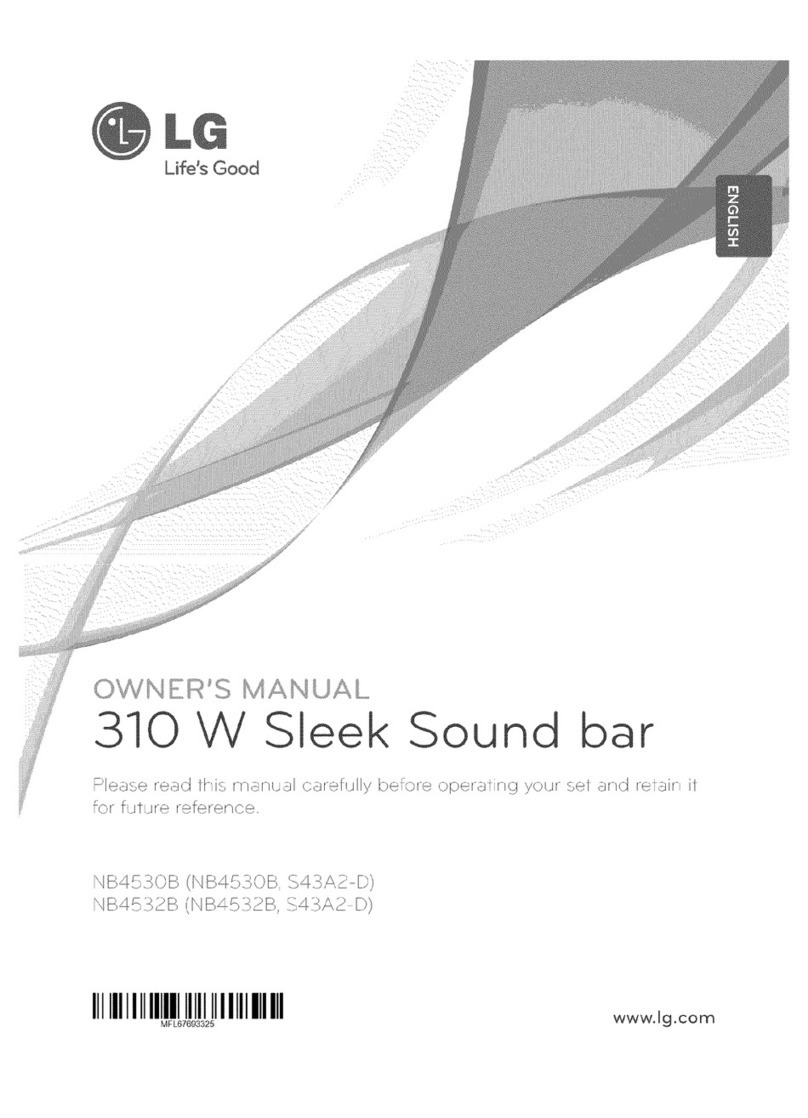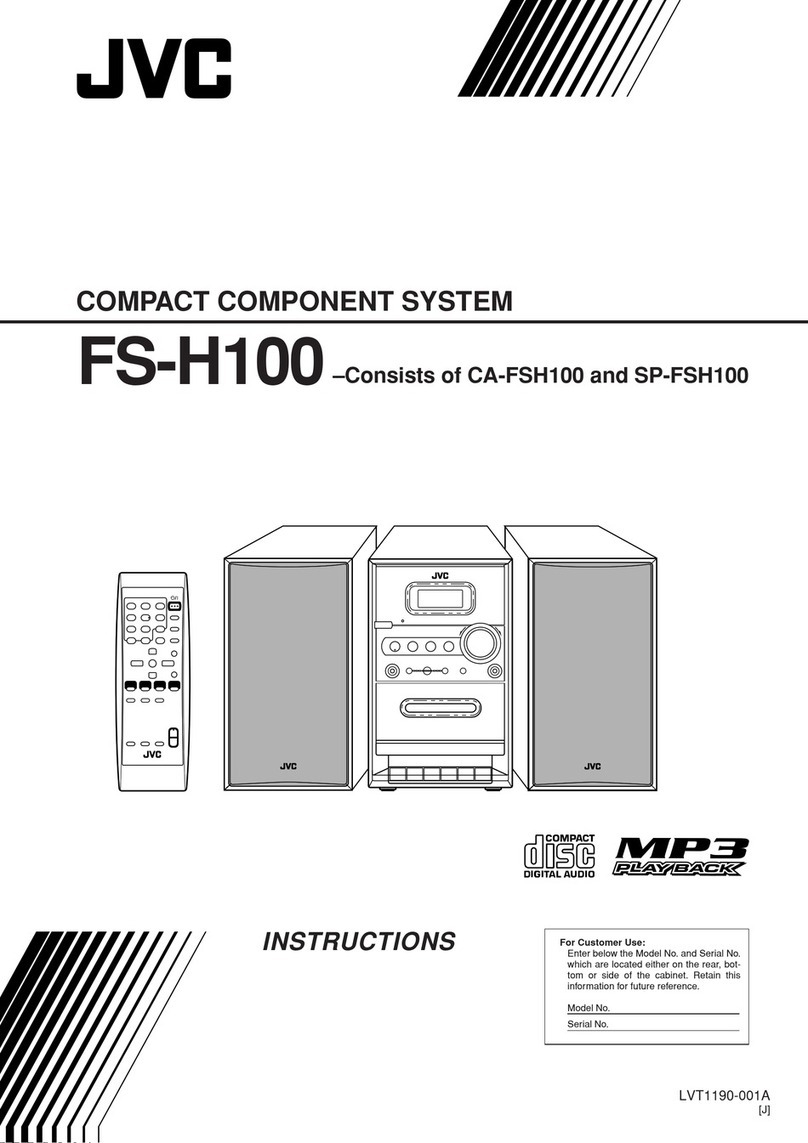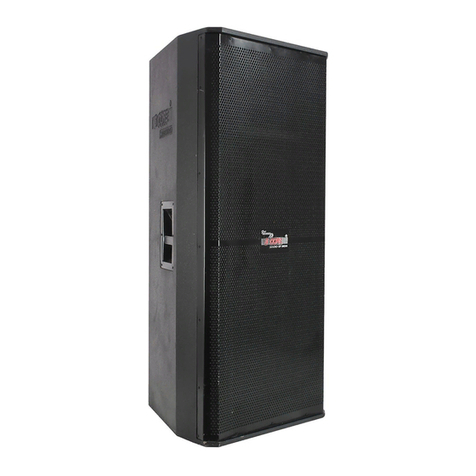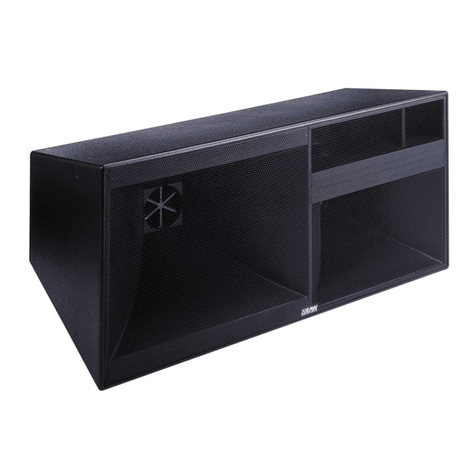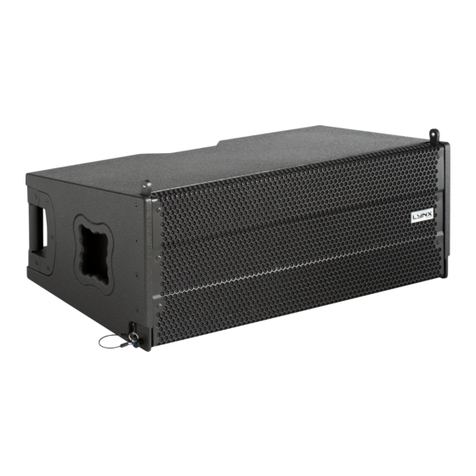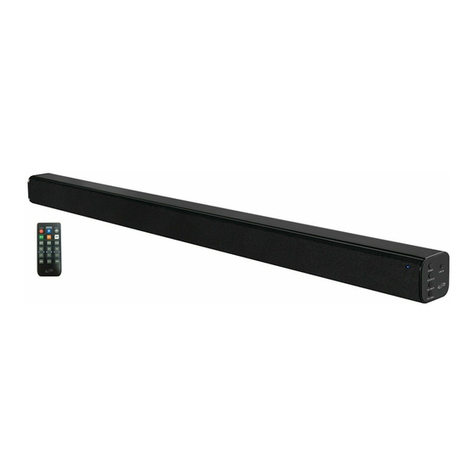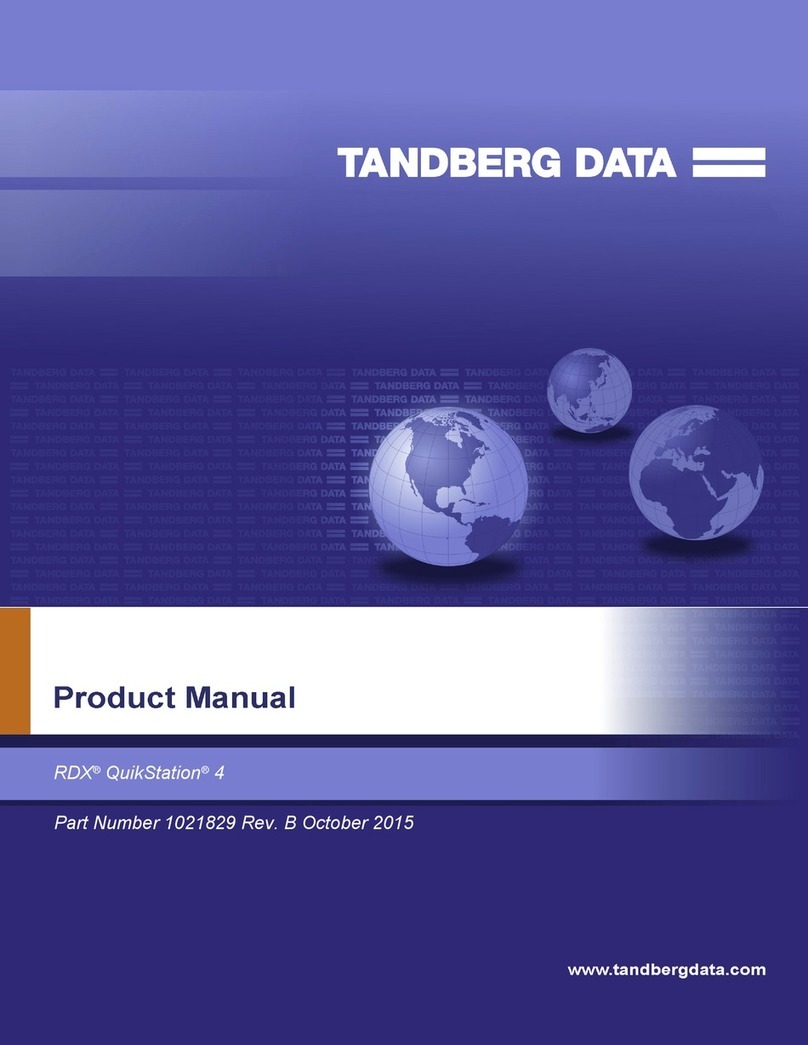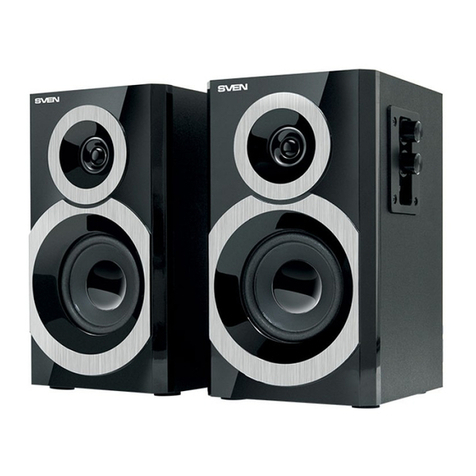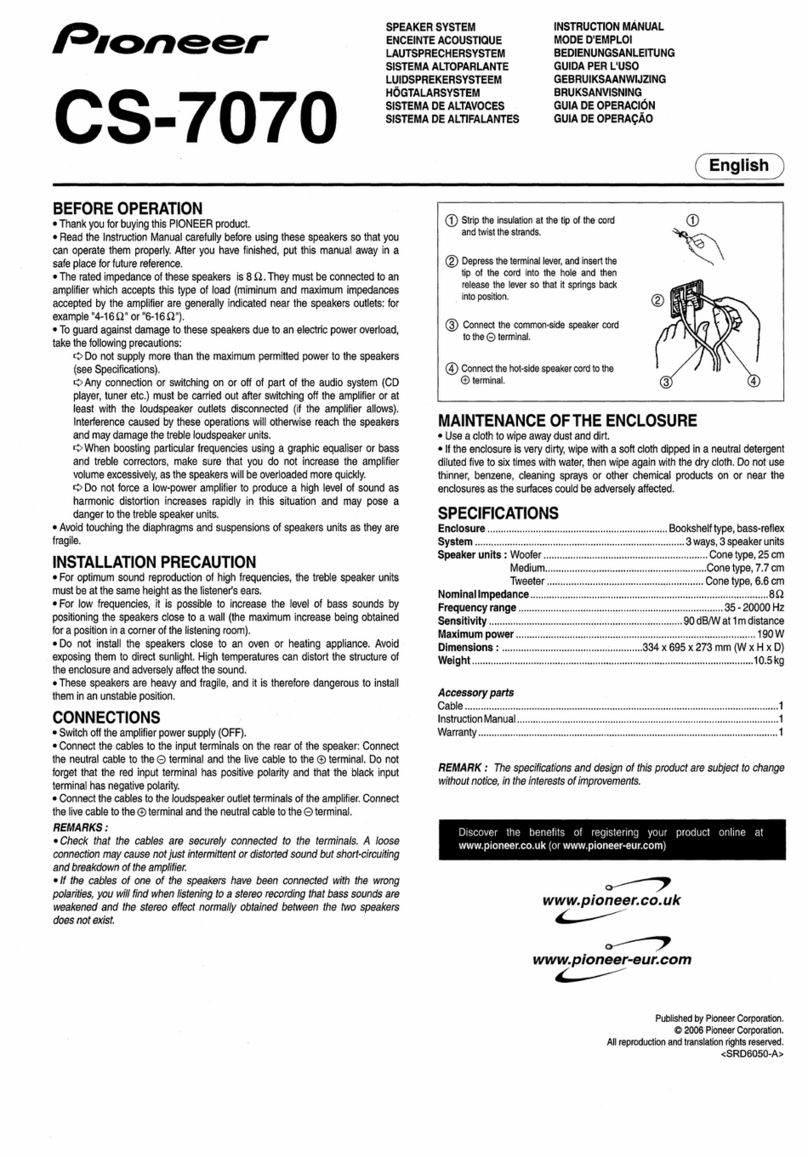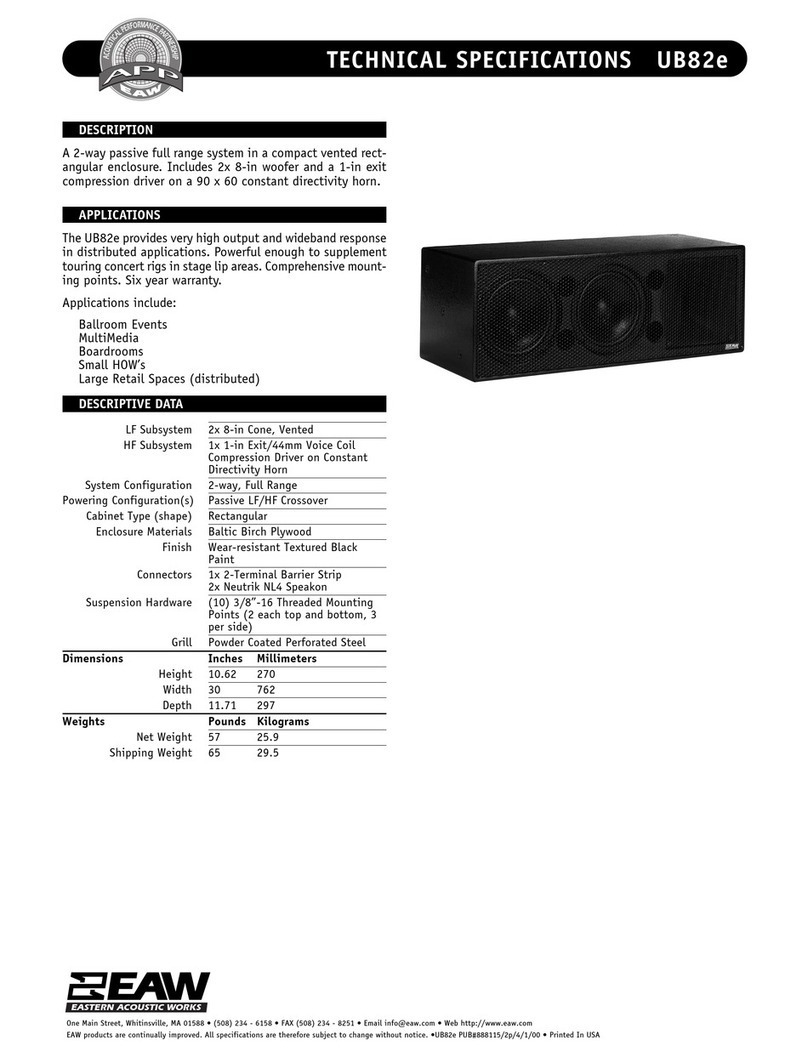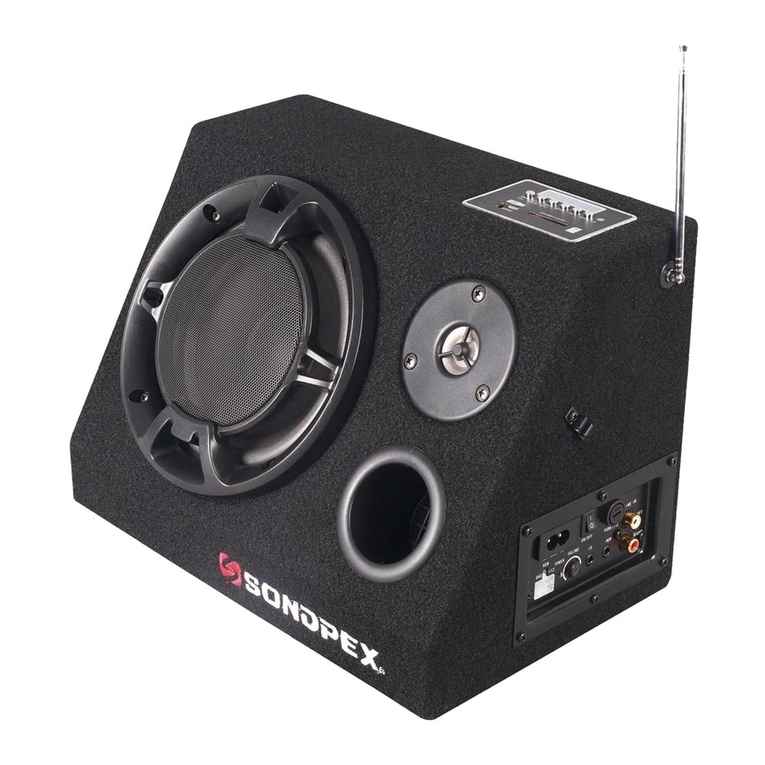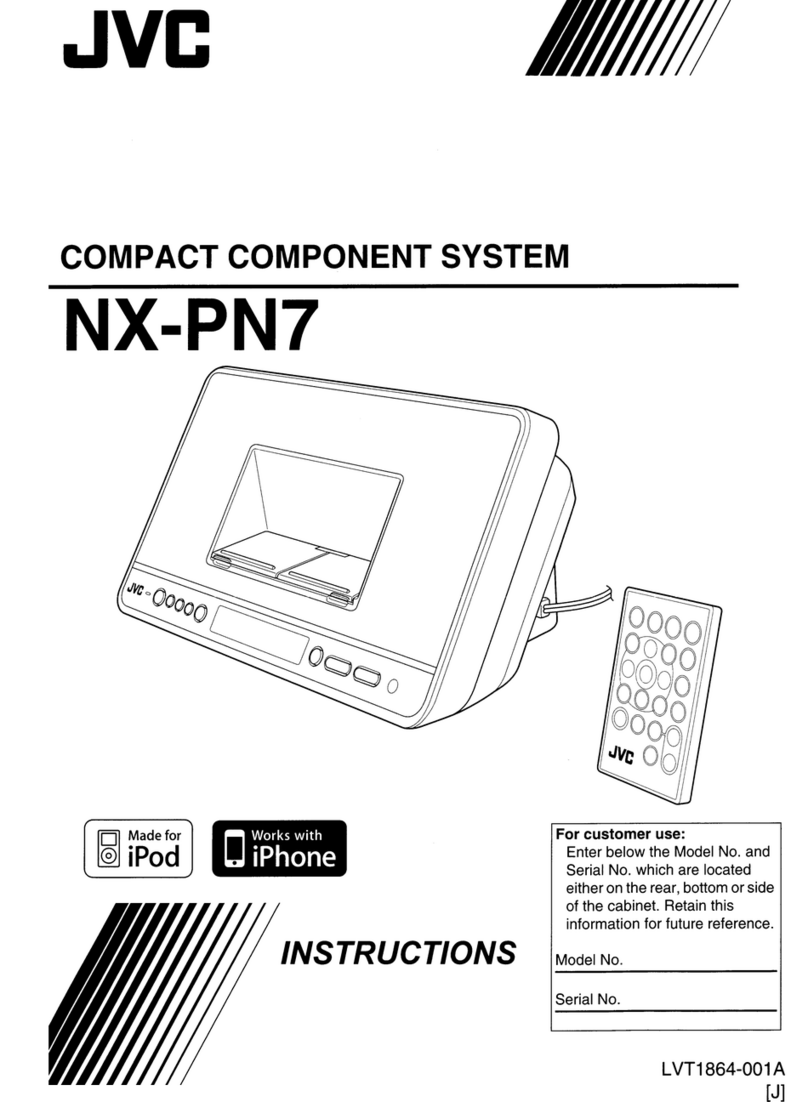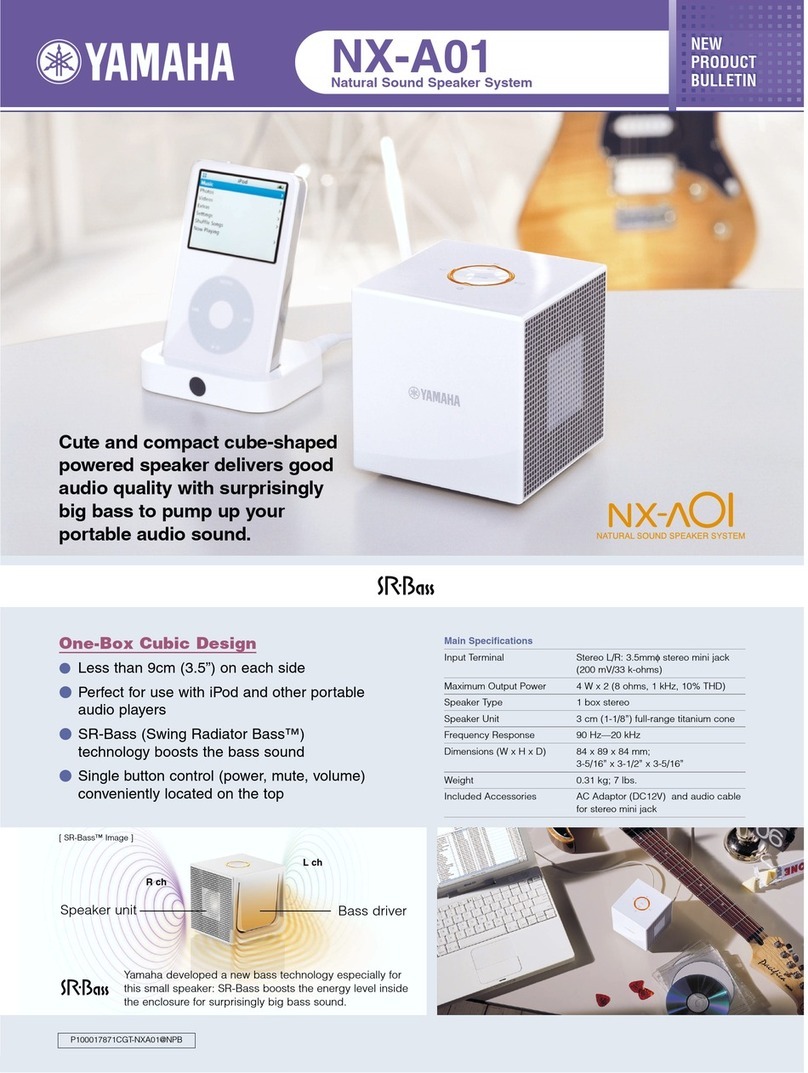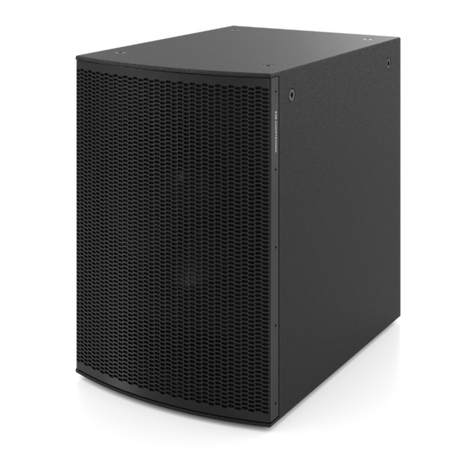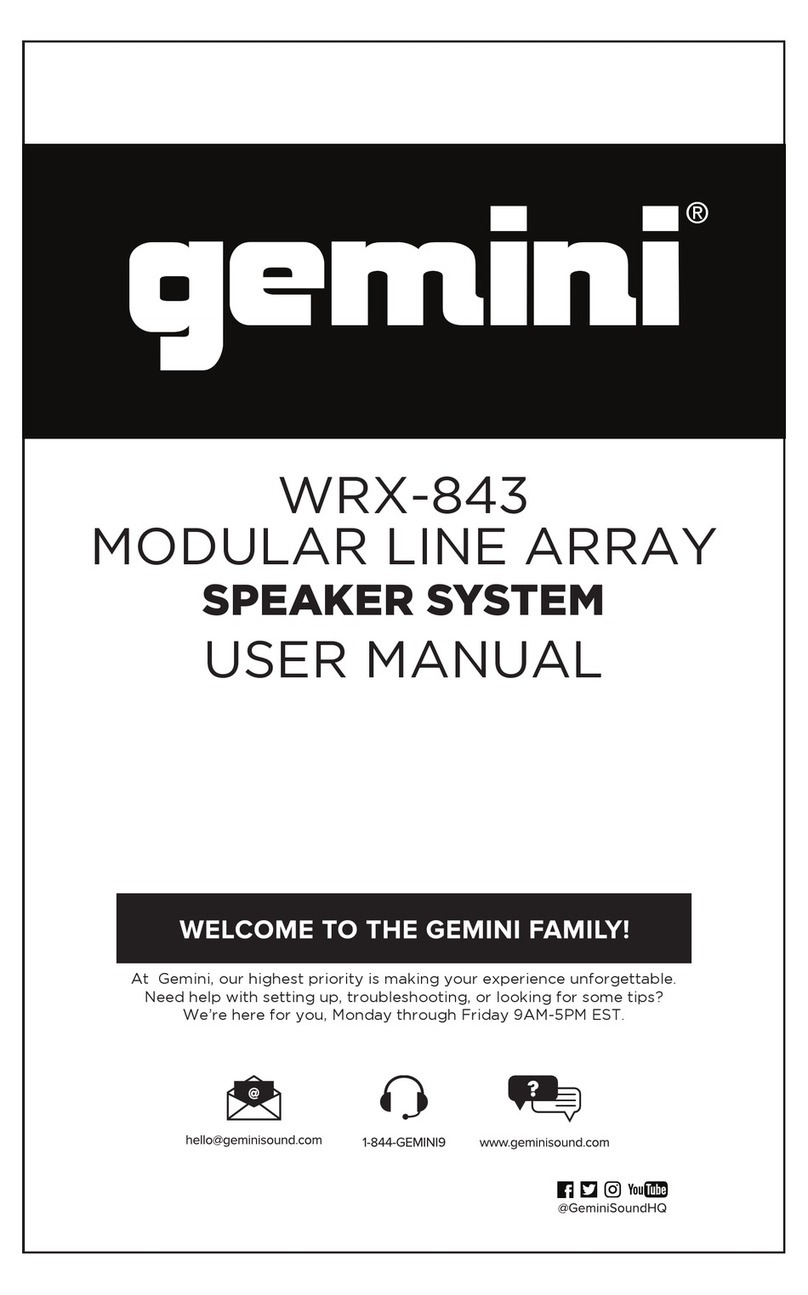
8
VTX B18 | Rigging Manual
2.5 - ARE YOU NEW TO RIGGING?
If you are new to rigging, you should do the following:
• Know the rules for safe rigging.
• Attend a safe rigging seminar.
• Meet and establish a relationship with a licensed mechanical or structural engineer. Get in the habit of asking them questions in-
stead of assuming their answers. Learn from what they tell you.
• Research and understand the codes, practices and requirements in the venues where you intend to operate your sound system.
2.4 - IMPORTANT SAFETY WARNING
The information in this section has been assembled from recognized engineering data and is intended for informational purposes only.
None of the information in this section should be used without first obtaining competent advice with respect to applicability to a given
circumstance. None of the information presented herein is intended as a representation or warranty on the part of JBL. Anyone making
use of this information assumes all liability arising from such use.
All information presented herein is based upon materials and practices common to North America and may not directly apply to other
countries because of differing material dimensions, specifications and/or local regulations. Users in other countries should consult with
appropriate engineering and regulatory authorities for specific guidelines.
Correct use of all included hardware is required for secure system suspension. Careful calculations should always be performed to
ensure that all components are used within their working load limits before the array is suspended. Never exceed the maximum recom-
mended load ratings.
Before suspending any speaker system always inspect all components (enclosure, rigging frames, pins, eyebolts, track fittings, etc.) for
cracks, deformations, corrosion or missing/loose/damaged parts that could reduce strength and safety of the array. Do not suspend
the speaker until the proper corrective action has been taken. Use only load-rated hardware when suspending JBL suspendable loud-
speaker models.
2.6 - INSPECTION AND MAINTENANCE
Suspension systems are comprised of mechanical devices and, as such, they require regular inspection and routine maintenance to
ensure proper functionality. Before suspending or pole mounting any speaker system, always inspect all components (enclosure, sus-
pension frames or brackets, pins, eyebolts, etc.) for cracks, deformations, corrosion or missing/loose/damaged parts that could reduce
strength and safety of the array. Do not suspend or pole mount the speaker until the proper corrective action has been taken.
Installed systems should be inspected at least annually. The inspection shall include a visual survey of all corners and load-bearing
surfaces for signs of cracking, water damage, de-lamination or any other condition that may decrease the strength of the loudspeaker
enclosure.
Accessory suspension hardware provided with or for VTX systems must be inspected for fatigue at least annually or as required by local
ordinance. The inspection shall include a visual survey of the material for signs of corrosion, bending or any other condition that may
decrease the strength of the fastener. Additionally, any eyebolts shall be checked for possible spin-out of the enclosure.
For all other hardware and fittings, refer to the hardware manufacturer’s inspection and maintenance guidelines for process.
